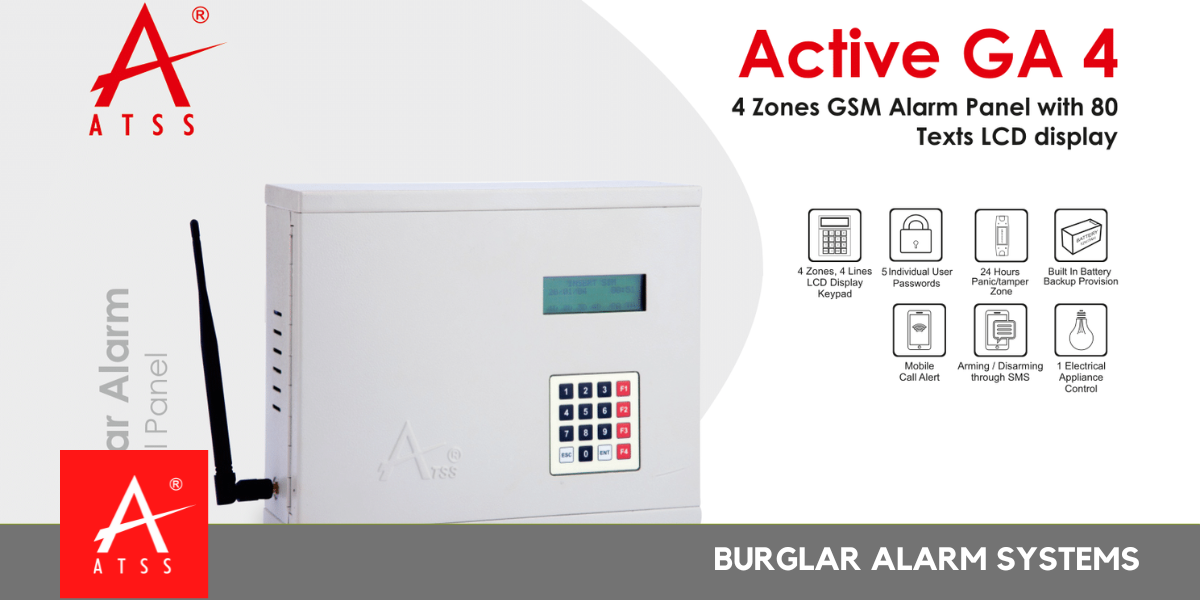Protect your home and loved ones with a reliable Burglar Alarm. Discover installation tips, device types, and benefits for 24/7 security.
Burglar Alarm: The Ultimate Guide to Protecting Your Home and Family
Have you ever wondered how secure your home really is? Even the safest-looking neighborhoods can fall victim to burglaries. In fact, studies show that a burglary occurs every few seconds somewhere in the world. A Burglar Alarm isn’t just a gadget—it’s a deterrent, a warning system, and peace of mind bundled into one.
Installing a Burglar Alarm protects your family, your property, and even your mental wellbeing by providing round-the-clock security. In this guide, we’ll explore everything you need to know—from planning your installation, understanding components, to choosing the right devices for your home or business. By the end, you’ll understand why a properly installed Burglar Alarm is one of the smartest investments you can make.
Why Install a Burglar Alarm?
The primary benefit of a Burglar Alarm is prevention. Most burglars avoid homes equipped with visible alarm systems. Beyond scaring intruders away, these systems:
- Offer 24/7 surveillance and protection.
- Provide instant alerts in case of unauthorized entry.
- Allow remote monitoring via smartphone apps.
- Reduce potential losses from theft or property damage.
In short, a Burglar Alarm doesn’t just react to intrusions—it actively prevents them.
According to the National Crime Prevention Council, homes without alarms are up to 300% more likely to be burglarized than those with an active security system.
Planning Your Burglar Alarm Installation
Before installing a Burglar Alarm, planning is crucial. Poorly positioned sensors or control panels can lead to false alarms or blind spots. Follow these guidelines:
- Create a Detailed Layout: Identify all entry points, windows, and high-risk areas. Map where sensors, sirens, and the control panel will be placed.
- Consider Power Sources: Ensure your alarm system has access to mains power, with battery backup in case of outages.
- Minimize Visibility of Wiring: Concealed wiring reduces tampering risks while keeping the system neat.
- Plan Zones Carefully: Divide your home into zones for better monitoring and quick response.
A thoughtful plan ensures your Burglar Alarm works effectively while keeping installation stress-free.
The Burglar Alarm Control Panel
The control panel is the brain of your Burglar Alarm system. It houses the microprocessor and circuitry that monitor detection zones, trigger alarms, and communicate with external devices.
Features of a Modern Control Panel:
- Data Collection: Receives information from magnetic contacts, PIR sensors, and other devices.
- User Interface: Includes keypad, display, speaker, and sounder for alerts.
- Power Backup: Operates on mains with optional 12V battery backup to function during outages.
Ideal Control Panel Locations:
- Near the main entrance.
- Inside cabinets or under-stair cupboards.
- Close to a power source and at a convenient height.
Tip: Avoid placing the panel in areas covered by PIR sensors when using Home Arm mode, unless they are intentionally excluded.
Entry and Exit Times
Setting proper entry and exit times prevents false alarms while ensuring security.
- Entry Time: The duration allowed to disarm the system upon entering your home (default: 30 seconds, adjustable 1–240 seconds).
- Exit Time: Time to leave before the system arms (default: 30 seconds, adjustable 1–99 seconds).
All zones must be clear to avoid triggering false alarms during arming or disarming.
Alarm Duration
The duration defines how long the siren will sound once triggered. Defaults are usually 20 minutes but can be configured from 1–20 minutes. Ensure compliance with local noise regulations to avoid fines.
Chime Zones
Chime zones alert you to activity without triggering a full alarm.
- Homes: Notify you of visitors or monitor children.
- Businesses: Alert staff of entries or restricted area access.
Avoid using chime mode for fire or 24-hour security zones, as these require immediate response.
Arming and Disarming Your Burglar Alarm
Modern Burglar Alarms offer multiple arming modes for flexibility:
- AWAY: Activates all zones; ideal when leaving home.
- HOME: Arms only perimeter zones; safe for internal movement.
- INSTANT: Triggers immediately on breach.
- LATCHKEY: Sends alerts if disarmed outside pre-set hours.
Disarming restores the system to standby while keeping fire and 24-hour zones active.
Disturbed Zones and Forced Arming
- Disturbed Zone: Activated by unauthorized movement in a monitored area.
- Forced Arming: Allows temporary system arming by bypassing faulty zones, ensuring protection even if some sensors fail.
Quick Arming and Remote Response
- Quick Arming: Arm your system without entering a code—ideal for emergencies.
- Remote Response: The system can alert monitoring centers or emergency contacts via phone, offering instant help when you’re away.
Burglar Alarm Devices
Magnetic Contact Detectors
These devices detect opening of doors or windows using magnetic fields. Triggering them while armed sets off the alarm. Common locations:
- Front/rear doors
- Garage, patio, or conservatory entries
Passive Infrared (PIR) Movement Detectors
PIR sensors detect motion through infrared changes. Ideal for wide coverage indoors. Avoid placing in zones accessible by pets to prevent false alarms.
External Siren
External sirens serve two main purposes:
- Deterrence: Loud noise disorients intruders.
- Alert: Draws attention from neighbors and encourages rapid response.
Installation Tips:
- Place in visible, high locations.
- Use tamper-proof wiring.
Maintenance and Monitoring
Even the best Burglar Alarm requires maintenance. Regularly check:
- Batteries and power backups
- Sensor alignment and functionality
- Siren volume and wiring integrity
Consider professional monitoring services for 24/7 surveillance and instant emergency response.
Choosing the Right Burglar Alarm System
When selecting a Burglar Alarm, consider:
- Type of Property: Homes, apartments, or commercial spaces have different requirements.
- Integration Options: Smart home compatibility can allow mobile alerts and remote control.
- Budget vs Features: Evaluate cost-effectiveness, not just upfront price.
- Brand Reputation: Trustworthy brands ensure reliability and support.
Conclusion
A Burglar Alarm is more than just a warning device—it’s a proactive security solution that protects your loved ones, property, and peace of mind. By carefully planning installation, choosing the right devices, and maintaining your system, you can significantly reduce the risk of burglary.
Whether it’s a simple home system with door sensors or a fully integrated setup with PIR detectors, chime zones, and external sirens, a smartly installed Burglar Alarm ensures you’re always protected—even when you’re not home.
Take Action Today: Invest in a Burglar Alarm, secure your home, and live with confidence. | WhatsApp
Home Security Systems | Burglar System Alarm | How to Select Burglar Alarm | Texecom Burglar Alarm | Visonic Alarm System | Home Security Alarm System | Burglar Security System

